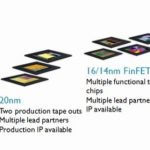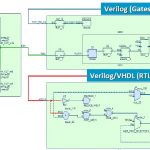Last week it was a rare opportunity for me to attend a webinar where an SoC design house, a leading IP provider and a leading EDA tool provider joined together to present on how the tool capabilities are being used for advanced mixed-signal simulation of large designs, faster with accuracy. It’s always been a struggle to combine design… Read More
Tag: spice
Analog Model Equivalence Checking Accelerates SoC Verification
In the race to reduce verification time for ever growing sizes of SoCs, various techniques are being adopted at different levels in the design chain, functional verification being of utmost priority. In an analog-digital mixed design, which is the case with most of the SoCs, the Spice simulation of analog components is the limiting… Read More
Analog FastSPICE Update at DAC
Tuesday night over dinner at DAC I was able to chat with Ravi Subramanian, CEO of Berkeley DA, recently acquired by Mentor Graphics back on March 21st. This acquisition provided Mentor with an Analog FastSPICE circuit simulator to round out its collection of simulators.… Read More
Active Power Management in UPF Using SPICE, VHDL-AMS or Verilog-AMS
My former co-worker, Kenneth Bakalar at Mentor Graphics is an expert in AMS modeling languages and UPFmethodology, so he recently teamed up with Eric Jeandeau to author an interesting white paper: Interpreting UPF for a Mixed-Signal Design Under Test. This white paper is based on a presentation made at DVCon earlier this year.… Read More
Concept Engineering Showcases Effective SoC Debugging Techniques
In a complex environment of semiconductor design where an SoC can have several millions of gates and multiple number of IPs at different levels of abstractions from different sources integrated together, it becomes really difficult to understand and debug the overall SoC design. Of course, along with the SoC integration, optimization… Read More
Teach Yourself Silvaco
In the dim and distant past, if you wanted to learn how to use a particular EDA tool then you would go on a training course. This would often be multiple days and often a significant dollar investment too. For most EDA companies, that option still exists and the big 3 have quite extensive training catalogs.
But nowadays it is often easier… Read More
Analog and Full Chip Simulation at Micron
IDM companies like Micronuse SPICE circuit simulators during the design phase in order to predict timing, currents and power on their custom IC chip designs at the transistor level. A senior memory design engineer at Micron named Raed Sabbahtalked today at a webinarabout how the embedded solutions group uses the FineSimcircuit… Read More
Ten Innovative Debugging Techniques – Pre & Post Layout
In a complex world of SoCs with multi-million gates and IPs from several heterogeneous sources, verification of a complete semiconductor design has become extremely difficult, and it’s not enough. In order to ascertain the right intent of the design throughout the design cycle, debugging at various stages of the design cycle… Read More
A Brief History of Functional Verification
Usually these brief history pieces are totally written by the SemiWiki blogger whose name is at the top. Often me since that was how I prototyped book chapters (buy). Well, OK, I did actually write this but it is completely cribbed from a presentation earlier this week by Wally Rhines who gave a sort of keynote at the announcement of… Read More
A New, Free, Web-Based EDA Toolset in the Cloud
In the 1990’s there was a push to build EDA frameworks, however they all failed because no user wanted to be locked into one EDA vendor tool flow. Fast forward to 2014 and there’s an emerging trend to use web-based EDA tools as a framework, instead of downloading and installing software to your desktop or device. I just… Read More






